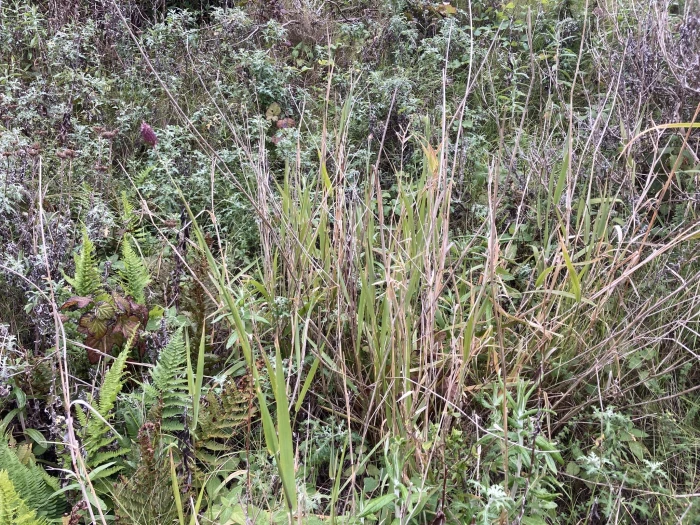California Canarygrass
(Phalaris californica)
California Canarygrass (Phalaris californica)
/
/

© Adam J. Searcy
CC BY 4.0
Image By:
© Adam J. Searcy
Recorded By:
Copyright:
CC BY 4.0
Copyright Notice:
Photo by: © Adam J. Searcy | License Type: CC BY 4.0 | License URL: http://creativecommons.org/licenses/by/4.0/ | Uploader: serpophaga | Publisher: iNaturalist |





















Estimated Native Range
Climate Requirements
| • Precipitation | 32" - 48" |
| • High Temp. | 69°F - 82°F |
| • Low Temp. | 37°F - 43°F |
Summary
Phalaris californica, commonly known as California canarygrass, is a perennial grass native to the coastal hills and mountains of southern Oregon and northern and central California, where it thrives in riparian zones, wet meadows, and other moist, open habitats. It typically reaches heights of 2-5 feet and is characterized by its upright growth habit and dense clusters of spikelets that are greenish-white when young, maturing to a straw color. Flowering occurs from late spring to early summer, and while the flowers are not particularly showy, they do contribute to the grass’s overall texture in the landscape.
California canarygrass is valued for its ability to stabilize soil and its use in habitat restoration projects. It is also planted for ornamental purposes in water gardens or as part of a naturalized planting scheme. This species prefers full sun to part shade and requires moist soil conditions, making it suitable for areas with wet soils where other plants might struggle. It is relatively low-maintenance but should be monitored for spreading, as it can become invasive outside of its native range. In some regions, it is considered a noxious weed due to its aggressive growth.CC BY-SA 4.0
California canarygrass is valued for its ability to stabilize soil and its use in habitat restoration projects. It is also planted for ornamental purposes in water gardens or as part of a naturalized planting scheme. This species prefers full sun to part shade and requires moist soil conditions, making it suitable for areas with wet soils where other plants might struggle. It is relatively low-maintenance but should be monitored for spreading, as it can become invasive outside of its native range. In some regions, it is considered a noxious weed due to its aggressive growth.CC BY-SA 4.0
Plant Description
- Plant Type: Grass
- Height: 2-4 feet
- Width: 1.5-2 feet
- Growth Rate: Moderate
- Flower Color: N/A
- Flowering Season: Spring, Summer
- Leaf Retention: Deciduous
Growth Requirements
- Sun: Full Sun, Part Shade
- Water: Medium
- Drainage: Medium, Slow
Common Uses
Bee Garden, Bird Garden, Deer Resistant, Erosion Control, Low Maintenance
Natural Habitat
Native to riparian zones, wet meadows, and other moist, open habitats in coastal hills and mountains
Other Names
Common Names: Reed Canary Grass
Scientific Names: Phalaris californica
GBIF Accepted Name: Phalaris californica